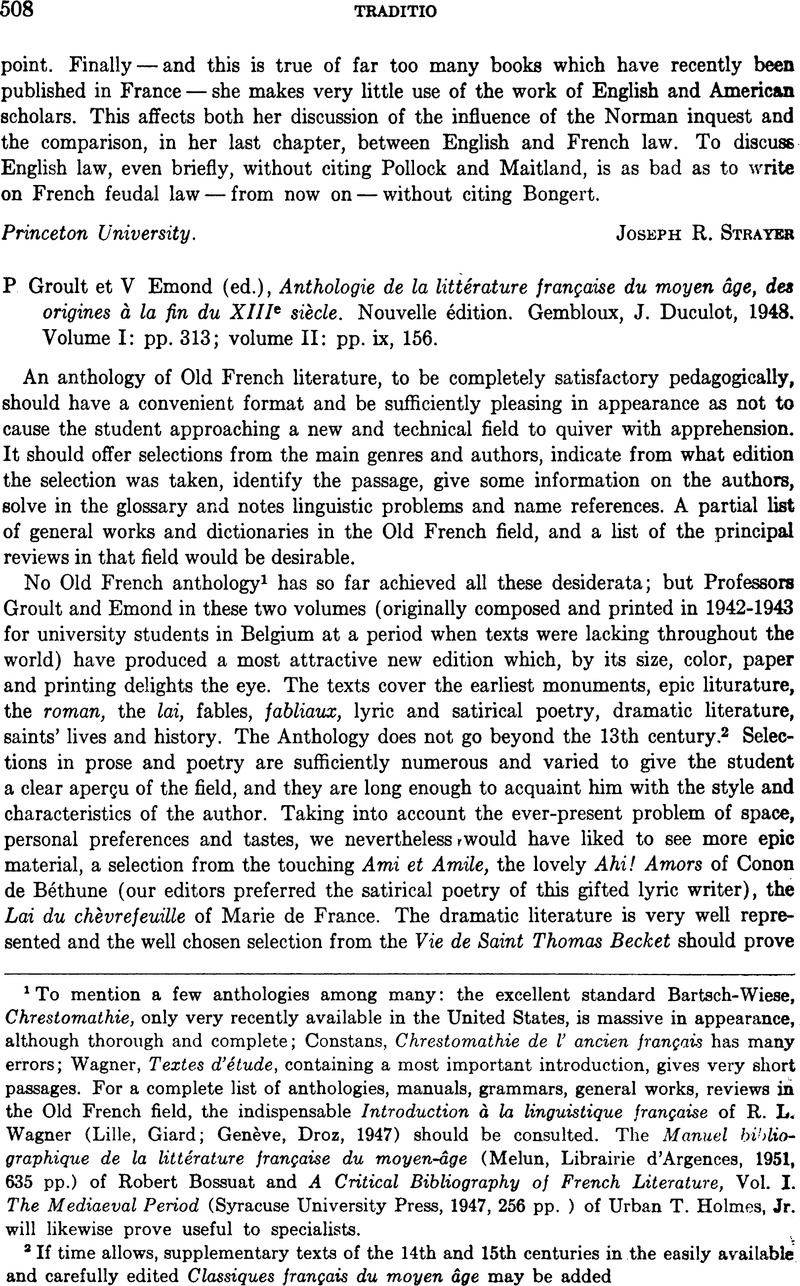No CrossRef data available.
Article contents
P. Groult et V Emond (ed.), Anthologie de la littérature française du moyen âge, des origines à la fin du XIIIe siècle. Nouvelle édition. Gembloux, J. Duculot, 1948. Volume I: pp. 313; volume II: pp. ix, 156.
Published online by Cambridge University Press: 04 August 2017
Abstract

- Type
- Book Reviews
- Information
- Copyright
- Copyright © 1951 by Fordham University Press
References
1 To mention a few anthologies among many : the excellent standard Bartsch-Wiese, Chrestomathie, only very recently available in the United States, is massive in appearance, although thorough and complete; Constans, Chrestomathie de l' ancien français has many errors; Wagner, Textes d'étude, containing a most important introduction, gives very short passages. For a complete list of anthologies, manuals, grammars, general works, reviews in the Old French field, the indispensable Introduction à la linguistique française of R. L. Wagner (Lille, Giard; Genève, Droz, 1947) should be consulted. The Manuel bibliographique de la littérature française du moyen-âge (Melun, Librairie d'Argences, 1951, 635 pp.) of Robert Bossuat and A Critical Bibliography of French Literature, Vol. I. The Mediaeval Period (Syracuse University Press, 1947, 256 pp.) of Urban T. Holmes, Jr. will likewise prove useful to specialists.Google Scholar
2 If time allows, supplementary texts of the 14th and 15th centuries in the easily available and carefully edited Classiques français du moyen âge may be addedGoogle Scholar
3 ‘Oriant’ and ‘palés’ are not in the glossary. French and Belgian students may recognize these words but Americans may not. This reviewer (now in the throes of correcting proof), having failed to find consistent rules in any edition for the use of the diaeresis in Old French, is somewhat sensitive on the subject. Why ‘Viviën’ p. 46 and ‘Lancïen’ p. 67; ‘fier’ (verb) p. 106 and ‘fïa’ p. 55; ‘crestiënté’ p. 38 and ‘Cristïen’ p. 262? Why no diaeresis on ‘passion’ p. 88, ‘esciant’ p. 75, ‘oriant’ p. 75 (‘Orïant’ p. 62)? Why ‘palès’ p. 63 and ‘palés’ p. 91; ‘aprés’ p. 94 and ‘après’ p. 52?Google Scholar




